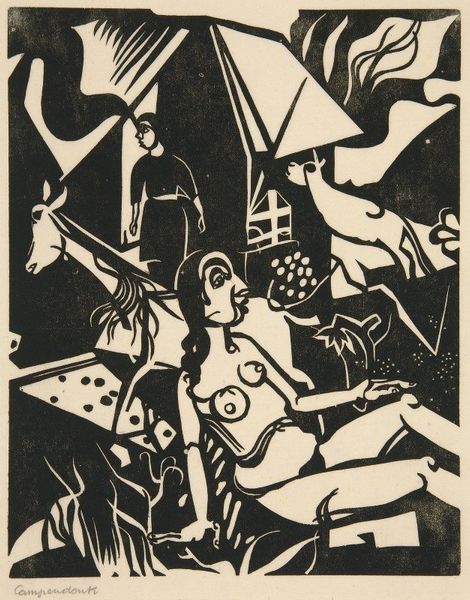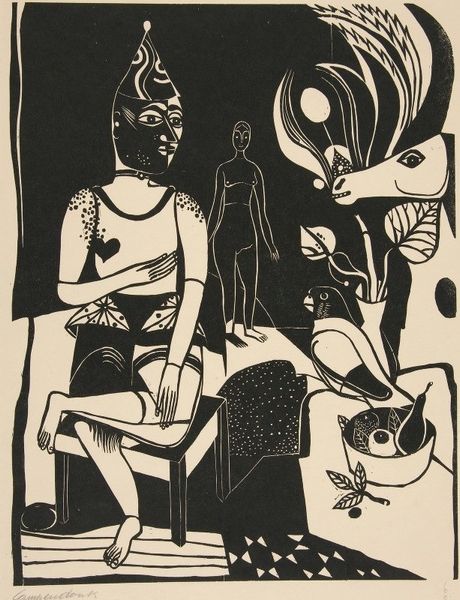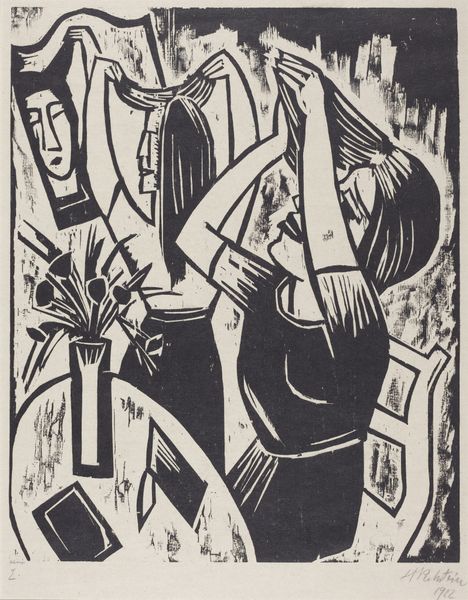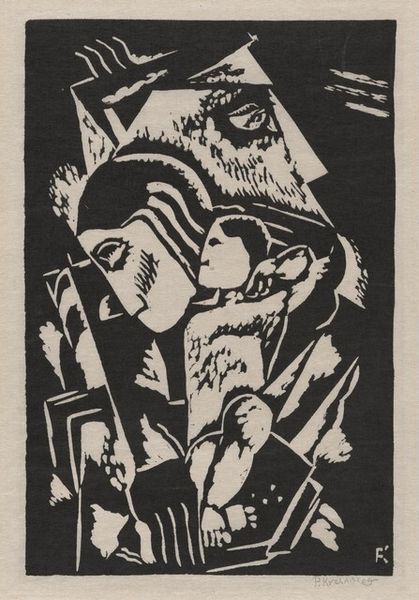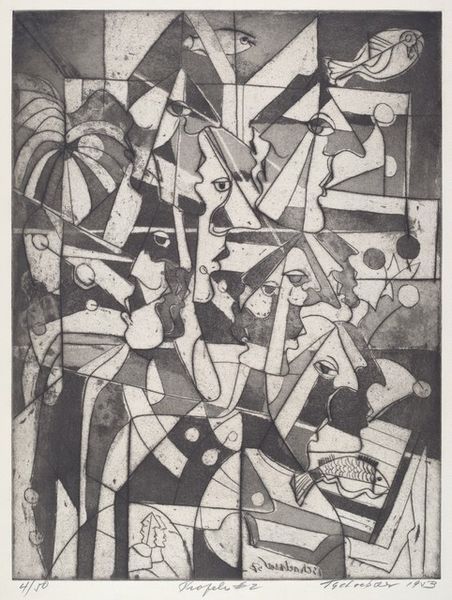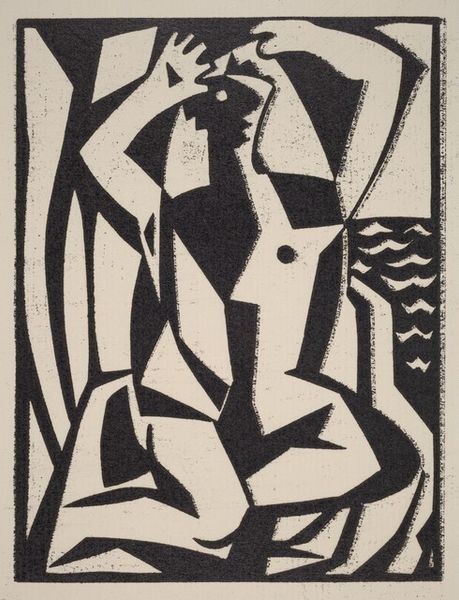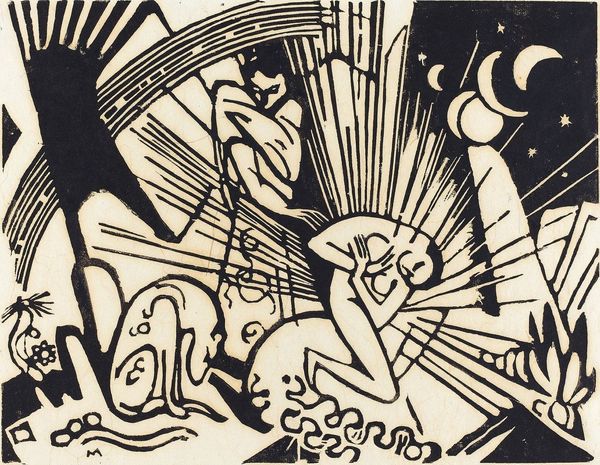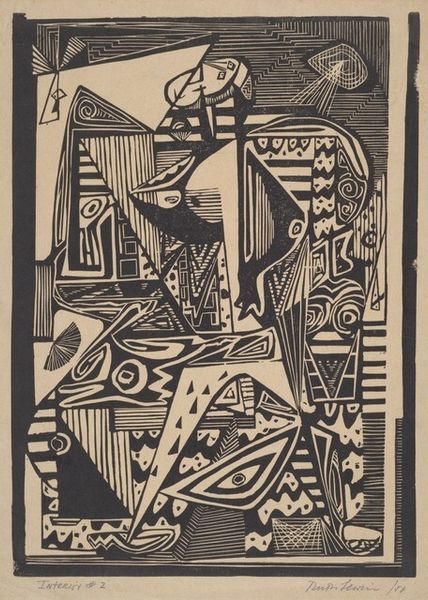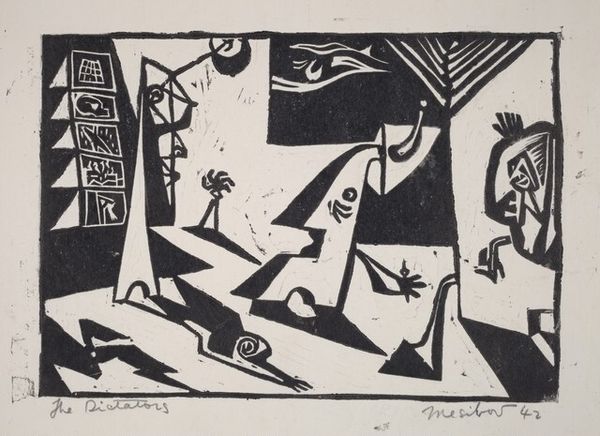
print, woodcut
# print
#
figuration
#
geometric
#
expressionism
#
woodcut
#
cityscape
Copyright: National Gallery of Art: CC0 1.0
Georg Alexander Mathey created this woodcut, Cirque de Paris, sometime in the first half of the 20th century, and it’s a wild ride of black and white shapes. It's like he dove headfirst into the chaos of the circus, then pulled out the feeling of it with his knife. Look at how Mathey uses solid blacks to define forms, creating a push and pull between the figures and the background. Check out the central performer, mid-pose, fan in hand, seemingly suspended in air, her angular body is so different from the more softly curved audience members, but her sharp-edged arm directly echoes the lines of the Eiffel Tower behind, uniting the circus and the city as a single stage. This kind of radical simplification reminds me of the German Expressionist woodcuts of the time, like those by Kirchner, where raw emotion explodes through every cut. Mathey’s bold strokes capture the energy and the spirit of the circus in a way that a more realistic depiction never could. It’s less about the specifics, and more about the overall feeling of the spectacle.
Comments
No comments
Be the first to comment and join the conversation on the ultimate creative platform.
